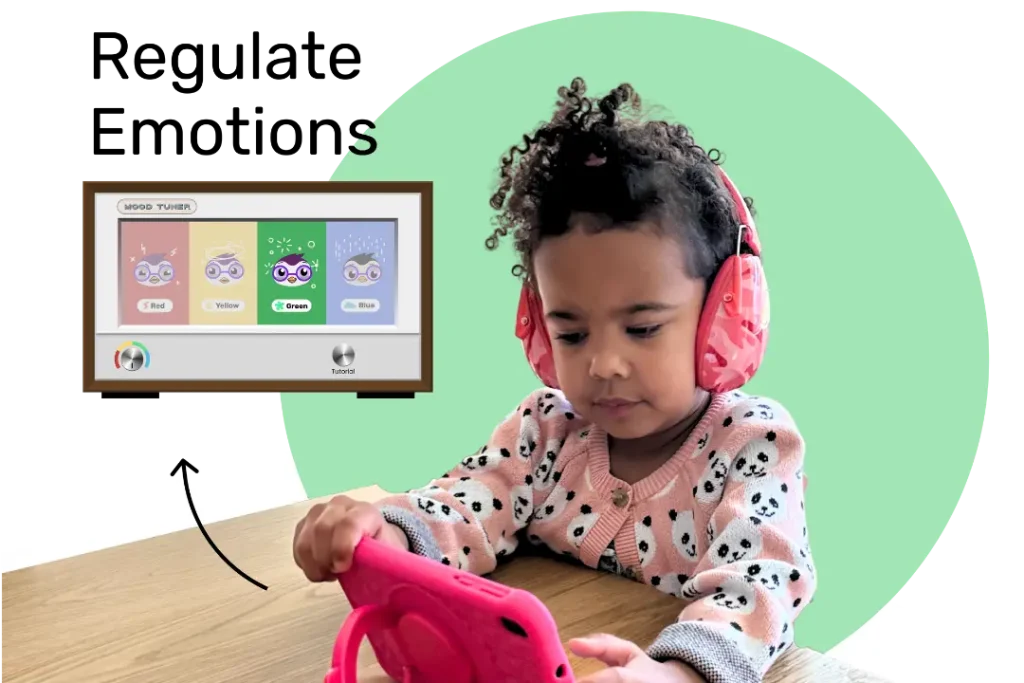Parents of autistic children know this problem all too well: the dreaded autism meltdown. Autism meltdowns are challenging for parents and children alike. Children don’t know how to express their needs and feelings in healthy ways, and parents struggle to understand. While you won’t always be able to stop a meltdown from happening, there are a few prevention methods that might help. Read on for everything that you need to know about autism meltdown prevention and more.
Table of Contents
Prevention Methods for an Autism Meltdown
Your child is going to get overwhelmed sometimes, but that doesn’t always have to end in a meltdown or a tantrum. It’s in the best interest of you and your child to try to deter the meltdown.
Here are a few ways that you can try to prevent meltdowns before they start.
Teach Your Child Coping Mechanisms
Whether your child is a toddler or an older child, you can start teaching them helpful coping mechanisms right away. It’s helpful if your child already has a therapist who can help, but you can also do it on your own. When your child is starting to get upset, encourage them to ask for help. Some children cope through physical activities (like sensory paths or going for walks) while others may want something to do with their hands to redirect their energy. Teach your child about breathing exercises as well.

Understand Your Child’s Triggers
If you want to prevent meltdowns, you need to know what causes them. This can be difficult when your child is too young to convey their feelings, but do your best to notice when the meltdowns start to happen. For many children, bedtime is a meltdown trigger. For others, confusing social situations are triggering. Even a trip to the grocery store can trigger a meltdown due to sensory overload.
When you understand your child’s triggers, you can either work on gentle exposure or avoid the triggers as a whole until your child develops the skills to cope with them.
Listen to What Your Child Is “Saying”
Meltdowns often start long before they become obvious. Think of the meltdown like a volcano. There’s a buildup of emotions that gets more and more intense until the “volcano” bursts and the tantrum starts. Notice the signs, even if your child isn’t able to convey them to you.
Is your child getting fidgety? Are they suddenly too quiet? Are they starting to zone out or become unresponsive? Look for abnormalities in your child’s behavior that lead up to meltdowns.
If your child can talk and understand their emotions, don’t ignore them. Even if you think a feeling is silly, talk to your child about it. Helping your child work through that feeling is a great way to prevent a meltdown.
Read More: How to Teach Yes No Questions to Kids with Autism
Set and Maintain a Strong Routine
Routines are great for reducing the frequency of meltdowns. Your child will feel safer and calmer when they know what to expect – and, honestly, don’t we all? This means that you also have to follow a routine, at least while the child is young.
Let your child help you create a routine that works for both of you. Children who feel more in control may feel calmer as they complete their routine.
Use a tool like Goally to track your child’s progress and reward them for good behavior. This encourages the child to continue moving through the routine and it can keep them calm.
If the routine has to change (for an event, an unexpected emergency, or even a fun activity), make sure that you notify your child well in advance. Change can be scary for children with autism.
Provide Sensory Objects
Make sure that there are plenty of sensory tools and objects available at your child’s disposal. They’re great for coping with challenging emotions!
Great sensory objects include slime, fidget spinners, bubble toys, and noise-canceling headphones. Let your child know where the sensory objects are and don’t limit when the child can access them. This will help prevent an autism meltdown.

Read More: What Does Sensory Overload Feel Like for Someone With ADHD?
Redirect the Child’s Attention
When you can see that your child is stressed, do your best to direct their attention elsewhere. Consider starting a fun game, asking them to help you with chores or cooking a meal, or watching a movie.
Distracting your child isn’t always the best option, but in a pinch, it can be effective.
Handling Autism Meltdowns When They Happen
Despite your best efforts, your child will experience a meltdown from time to time. That’s okay! You’re not a bad parent and you did everything in your power to prevent it.
When your child is experiencing a meltdown, you should remove them from the situation if possible. Remember that the child is expressing an unmet need or anxiety, and they can’t control what’s happening.
Display empathy for your child and let them know that they’re safe. Instead of trying to reason with the child, validate their feelings. When you’re in a quiet place, give them something that soothes them and gives them time to decompress.
Learning from Autism Meltdowns
So the meltdown happened. Now what?
Use meltdowns as learning experiences. Try to keep a diary of when and why the meltdowns happen. This can help you identify potential triggers and remember what worked (or didn’t work) when you tried to soothe your child.
"So happy with our devices! My two with ASD and ADHD finally remember what they are supposed to do and the order of which to do them!" — Mom of 2 kids Learn more →
Because all children with autism are different, not every prevention method is going to be the same. By taking time to learn from the meltdown instead of just getting frustrated, you’ll be able to use more effective techniques in the future.
Understanding and Managing Autism Meltdowns: Supporting Your Child
Dealing with an autism meltdown can be challenging for both parents and their children. It’s important to remember that these meltdowns are not intentional acts of defiance or attempts to hurt or embarrass you. Instead, they are a result of overwhelming stress and difficulty in expressing emotions. Here are some strategies to help support your child during an autism meltdown:
- Maintain Calm: Stay calm and composed yourself to provide a sense of stability during the meltdown.
- Create a Safe Environment: Ensure the immediate environment is safe and free from potential hazards to prevent any harm.
- Reduce Sensory Stimulation: Minimize sensory input such as loud noises, bright lights, or crowded spaces to help your child regulate their sensory experiences.
- Offer Comfort: Provide a comforting presence by using gentle touch or soft spoken words to reassure your child that you are there to support them.
- Allow Time and Space: Give your child time and space to calm down, avoiding any demands or expectations until they are ready to re-engage.
Goally | Kid’s Tablet for Building Emotional Regulation Skills
Is your child struggling with understanding and managing their emotions? Goally teaches emotional regulation skills in a fun and interactive way!

The Mood Tuner app encourages kids to look inwards and identify their feelings, helping them understand what’s going on inside. Once they’ve recognized their emotions, they can choose from a variety of exercises designed to help them self-regulate and find their balance.
Remember, preventing an autism meltdown is not always possible, and it’s essential to approach them with empathy and understanding. By implementing these strategies and being a supportive presence, you can help your child navigate through meltdowns and promote their emotional well-being.
FAQ’s About Autism Meltdowns
What is an autism meltdown? An autism meltdown is an intense response to overwhelming sensory or emotional stimuli that can occur in individuals on the autism spectrum.
What are the common triggers for autism meltdowns? Common triggers for autism meltdowns can include sensory overload, changes in routine, transitions, or difficulty communicating needs.
How can I help prevent an autism meltdown? While it's not always possible to prevent meltdowns, strategies like maintaining a structured routine, providing sensory supports, and offering clear communication can help minimize triggers.
What should I do during an autism meltdown? During an autism meltdown, it's important to remain calm, create a safe environment, reduce sensory input, and offer comfort and support without overwhelming the individual.
How can I support my child after an autism meltdown? After a meltdown, provide a quiet and comforting space, offer reassurance, and allow your child time to regulate their emotions before resuming activities.
This post was originally published on 03/02/2022. It was updated on 09/23/2023.

Goally
We help parents teach their kids life skills, like doing bedtime and morning independently. Backed by science, we incorporate evidence-based practices and expert-informed designs in all of our apps and content.





